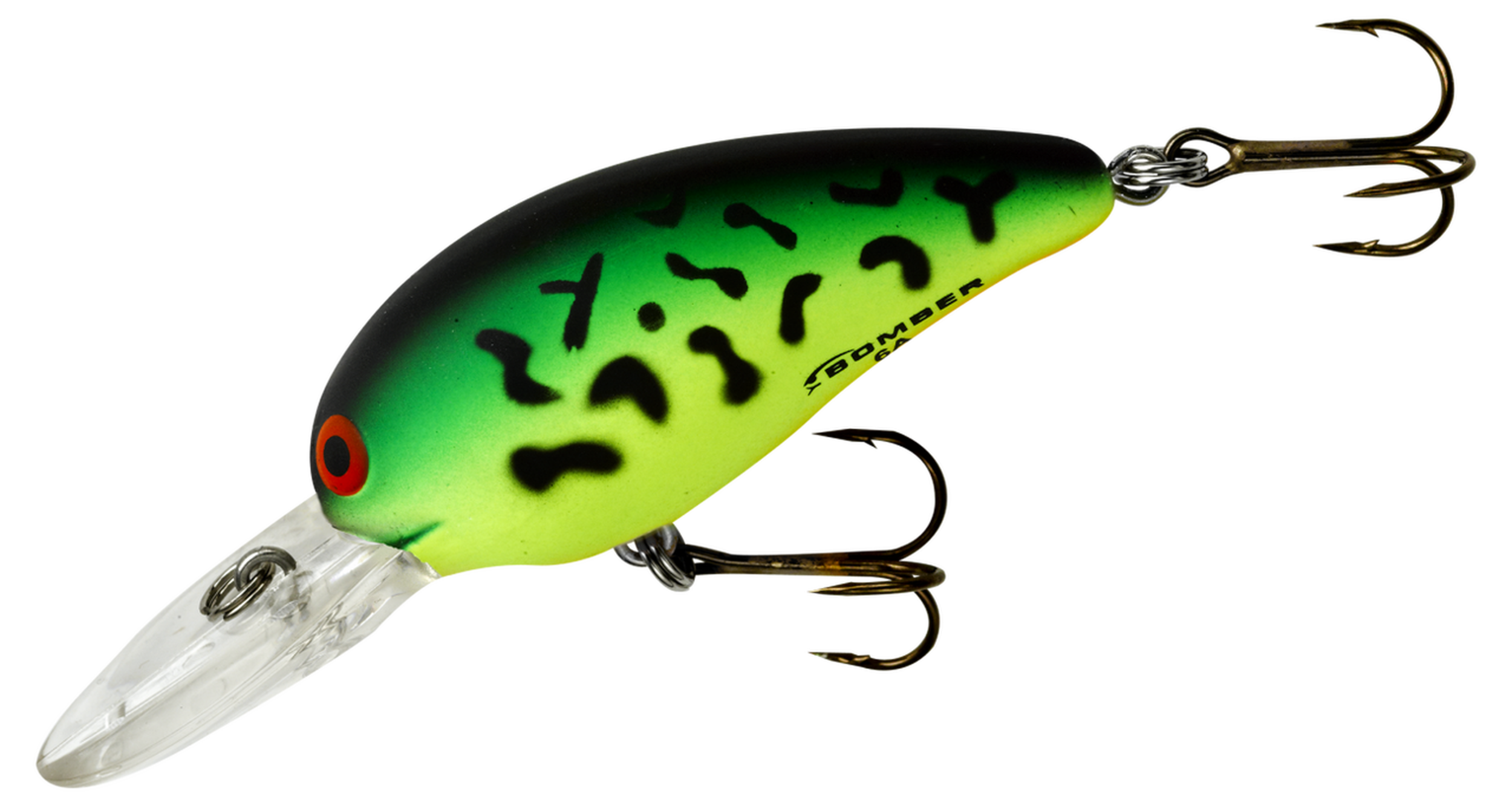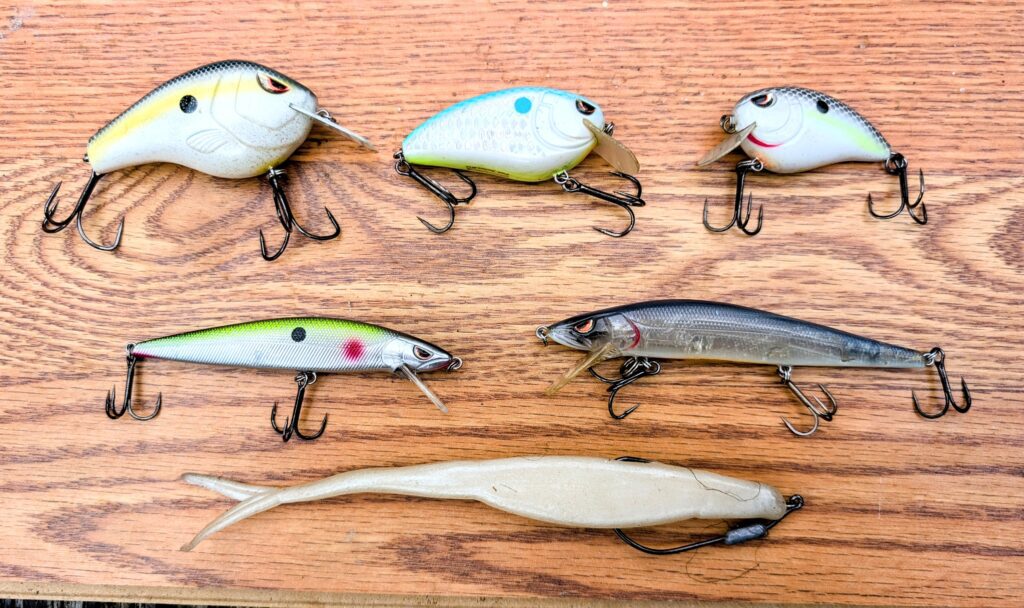8 Bass Fishing Lures for Early Morning and Dusk Fishing
Wiki Article
Discover the most effective Strategies for Choosing Bass Lures for Your Next Fishing Expedition
Picking the best bass Lures can significantly affect fishing success. Fishermens should take into consideration various elements, such as seasonal patterns and water quality. Understanding bass actions is vital (Bass Lures). Choosing Lures that mimic natural target can bring about far better results. Yet, lots of are unsure regarding the best techniques to execute. What methods should one focus on to boost their angling experience? The solutions exist in analyzing specific problems and adapting as necessaryComprehending Bass Habits and Habitat
Recognizing the subtleties of bass behavior and environment is necessary for any angler intending to boost their angling success. Bass are frequently located in numerous settings, consisting of rivers, storage tanks, and lakes, where they look for structure such as submerged rocks, plants, and fallen trees. Their behavior is greatly influenced by water temperature level, light degrees, and offered forage.Throughout warmer months, bass have a tendency to be extra active, frequently inhabiting shallower waters, while in chillier months, they pull back to much deeper locations. Furthermore, bass exhibit patterns of feeding, commonly being much more aggressive during dawn and sundown. They are opportunistic killers, taking advantage of smaller fish, pests, and shellfishes. Comprehending these factors can aid fishermens recognize prime angling locations, along with the most effective times to fish. Identifying bass behavior in connection with their habitat is critical for successful angling, guiding anglers in making notified decisions concerning where to cast their lines.
Matching Lures to Seasonal Conditions
As anglers adjust their methods to transforming seasons, matching Lures to seasonal problems ends up being an essential technique for enhancing angling success. In spring, when bass are arising from wintertime inactivity, fishermens frequently utilize spinnerbaits and shallow-running crankbaits to resemble the movements of prey. Summertime requires a shift to topwater Lures or soft plastic worms, as bass look for shade and cooler waters. Throughout the autumn, when bass are fattening up prior to winter season, larger Lures that imitate baitfish can be effective. Winter season requires a more subtle approach; jigs and slow-moving skill lures typically produce better results as bass become sluggish. Recognizing these seasonal patterns aids fishermens choose the best appeals, thus raising their chances of a successful catch. By aligning appeal options with the all-natural behavior of bass throughout the year, anglers can optimize their fishing experience and boost their overall success on the water.The Value of Shade Choice
Shade selection plays a critical role in bass fishing, as it can considerably impact a fisher's success. Variables such as water clearness, seasonal changes, and the details choices of various bass varieties all affect which shades are most reliable. Comprehending these elements enables fishermens to make educated selections that enhance their angling experience.
Water Quality Factors To Consider
When the water clearness varies, picking the appropriate bass appeal color comes to be vital for bring in fish. In clear water, natural colors such as shad or bluegill patterns often tend to be much more effective, as they mimic the prey bass are accustomed to seeing. On the other hand, in murky or discolored water, brighter shades like chartreuse or fire tiger can enhance visibility, making it less complicated for bass to identify the lure. The comparison between the appeal and the surrounding environment plays a considerable role in angling success. Anglers need to also consider the moment of day; lighter colors might function better in intense sunshine, while darker hues can be much more effective throughout low-light conditions. Adjusting attraction color to water clarity enhances the opportunities of an effective catch.Seasonal Shade Patterns
How do seasonal changes affect bass behavior and attraction effectiveness? As temperature levels change throughout the year, bass adjust their feeding practices and liked environments, making color option vital for effective fishing. In spring, when bass spawn, brilliant colors like chartreuse can stand out. Summertime often ask for more all-natural shades, such as green pumpkin or shad patterns, as bass look for to blend in with their environments. Throughout fall, dynamic shades like orange and red simulate the altering vegetation, attracting bass as they prepare for wintertime. In winter months, controlled tones such as white or grey may be a lot more effective, as bass come to be lethargic. Eventually, recognizing seasonal color scheme enables anglers to pick Lures that reverberate with bass's current actions, boosting their chances of success.
Species-Specific Preferences
Recognizing species-specific choices is crucial for fishermens aiming to optimize their appeal choice. Different bass varieties, such as largemouth and smallmouth, show distinct color preferences based upon their environment and feeding habits. Largemouth bass frequently like darker shades, especially in murky waters, where shades like black and dark green simulate all-natural victim. On the other hand, smallmouth bass are most likely to reply to brighter shades, such as chartreuse and orange, particularly in clear waters. Additionally, water clearness and light problems can affect these preferences, making it crucial for anglers to adapt their attraction color accordingly. By thinking about these species-specific preferences, anglers can enhance their chances of an effective fishing expedition, eventually enhancing their overall experience on the water.Picking the Right Entice Kind for Various Situations
Selecting the ideal lure type for various angling situations is vital for success on the water. Fishermens have to think about factors such as water clarity, weather, and the bass's feeding habits. For dirty water, darker-colored lures, such as spinnerbaits or jigs, can be efficient, as they develop a strong shape. In clear water, natural-colored Lures like soft plastics or topwater baits may lure wary bass.When fishing in heavy cover, using weedless gears or heavy jigs can aid browse through challenges without getting. Conversely, open water situations may benefit from crankbaits or swimbaits that can cover better distances. Furthermore, throughout cooler months, slower-moving Lures tend to be more reliable, while warmer problems might ask for faster retrieves. By adapting attraction selections to particular environments, anglers boost their chances of a successful catch.
Experimenting With Size and Activity

Anglers frequently try out a range of activities and dimensions to establish what jobs best under varying problems. A slow, subtle action may be ideal in cooler water, while a fast, hostile recover could be much more effective in warmer temperature levels. By meticulously observing the bass's reactions to these variations, fishermens can fine-tune their strategy and boost their possibilities of a successful catch. Inevitably, the best mix of dimension and action can make a considerable difference on the water.
Reading Water Problems for Better Draw Choices
Recognizing water problems is critical for selecting the right bass appeal. Elements such as water clarity and temperature level can substantially influence fish behavior and feeding patterns. By analyzing these problems, fishermens can make enlightened choices that enhance their possibilities of a successful catch.Analyzing Water Clearness
How does water quality influence the efficiency of bass lures? Water clearness considerably influences bass behavior and the exposure of attractions. In clear water, bass tend to be more mindful, making natural-colored Lures more effective as they simulate target closely. Fishermens might select lighter, subtler tones to stay clear of alarming fish. Alternatively, in dirty or discolored water, more vibrant and even more dynamic shades stick out, drawing in focus even in reduced visibility problems. Furthermore, the sort of appeal can differ; slower-moving Lures may function much better in clear water, while much faster, much more aggressive discussions can tempt bass in murkier environments. Comprehending the clearness of the water allows anglers to choose Lures that optimize their chances of success throughout their fishing expedition.Recognizing Water Temperature Level
As water temperature changes, it straight influences bass habits and their feeding patterns, making it important for fishermens to think about when choosing lures. Generally, bass choose warmer temperatures, generally in between 65 ° F and 75 ° F, where their metabolism is enhanced, leading to increased Bass Fishing Lures feeding activity. In cooler water, bass come to be sluggish and might choose slower-moving lures, such as jigs or soft plastics. Alternatively, throughout warmer months, faster discussions like crankbaits or topwater Lures can be a lot more efficient. Anglers must also consider seasonal modifications; for instance, spring warming causes hostile feeding as bass prepare to generate. By understanding how temperature level impacts bass, anglers can make educated choices on attraction option, significantly improving their chances of success.Tips for Organizing and Preserving Your Lure Collection
While several anglers focus on choosing the ideal Lures for their next fishing journey, organizing and keeping a lure collection is just as crucial for improving effectiveness and performance. A well-structured collection allows fishermens to promptly find the Lures they require, decreasing time spent searching with deal with boxes.To start, fishermens need to classify Lures by type-- crankbaits, jigs, or soft plastics-- making it much easier to locate certain options. Utilizing take on trays or boxes with flexible compartments can help keep every little thing organized. Identifying containers streamlines the process even more, aiding fast recognition.
Normal maintenance is also important; fishermens must check Lures for signs of wear, such as rusted hooks or harmed paint, and replace them as required. Cleaning up Lures after each journey prevents damage and ensures durability. By implementing these organizational and maintenance methods, fishermens can improve their fishing experience and guarantee their Lures are always in optimal problem.
Often Asked Inquiries
What Are the Ideal Brand Names for Bass Lures?
The most effective brand names for bass Lures include Rapala, Strike King, and Berkley. These brands are renowned for their advancement, high quality, and performance, interesting both novice and knowledgeable fishermens looking for successful fishing experiences.The Number Of Lures Should I Tackle a Trip?
A normal fishing expedition should consist of around five to 10 appeals, enabling versatility while preventing clutter. This option needs to include various types and shades to adapt to transforming problems and fish preferences.Can I Make My Own Bass Lures?
Yes, individuals can make their very own bass Lures using numerous materials and strategies - Best Bass Fishing Lures. Crafting Lures enables modification, making it possible for fishermens to trying out shades, shapes, and dimensions to match specific fishing problems and choicesWhat's the Average Life-span of a Bass Tempt?
The average life expectancy of a bass appeal differs, generally lasting from a couple of months to numerous years, depending upon worldly quality, usage frequency, and environmental conditions. Correct treatment can significantly prolong a lure's functionality.Exist Certain Lures for Night Fishing?
Yes, there specify Lures developed for night angling. Dark colors and Lures that create resonances, such as spinnerbaits or jigs, frequently draw in bass in low-light problems, enhancing exposure and triggering predatory instincts.On the other hand, in murky or discolored water, brighter colors like chartreuse or fire tiger can improve presence, making it easier for bass to find the lure. Larger Lures can attract bigger bass, while smaller Lures might be extra reliable for catching smaller sized fish. Additionally, the kind of lure can vary; slower-moving Lures might work better in clear water, while much faster, much more hostile discussions can lure bass in murkier settings. As water temperature level varies, it straight influences bass actions and their feeding patterns, making it crucial for fishermens to think about when choosing appeals. While many anglers focus on choosing the best Lures for their next fishing journey, organizing and keeping an appeal collection is similarly important for enhancing performance and performance.
Report this wiki page